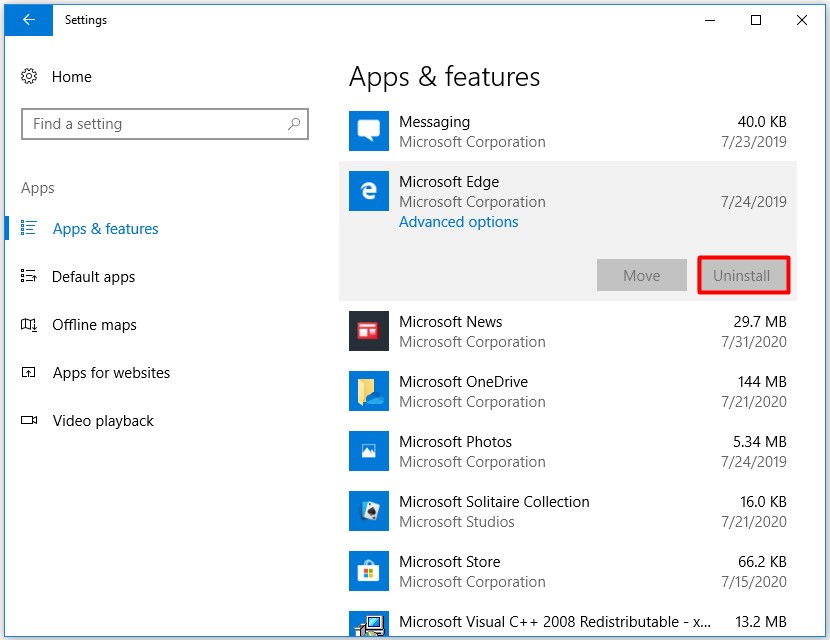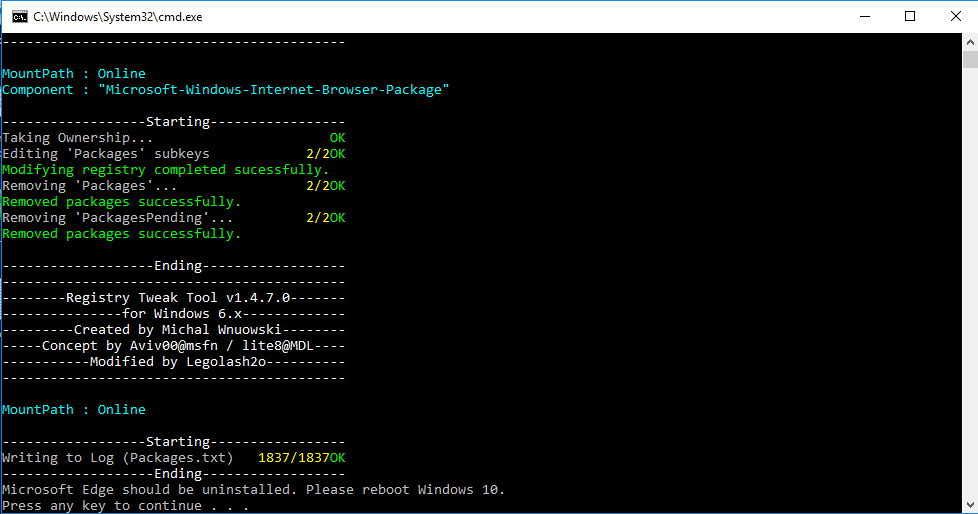
Now that you have PowerShell running as an administrator. Right-click on it and click on ‘Run as administrator’ from the options.Īlternatively, you can right-click on the ‘Start’ button and click on ‘Windows PowerShell (Admin)’ from the available options. You will find ‘Windows PowerShell’ in the search results. Top open Powershell, click on the ‘Start’ button, and type Powershell. While Powershell is not the friendly way to uninstall an application, but this is the only method that works for Microsoft Edge. You can uninstall it through PowerShell or Command Prompt. You cannot uninstall it in the regular way you uninstall other applications. Since Edge is a product of Microsoft, they embedded it in Windows 10 and made it difficult to get rid of it. There is still a room for improvements compared to Google Chrome or Firefox. If you have any questions related to this article, then ask them in the comment section below.Microsoft Edge has come a long way from being mediocre browser to a good one. Remember, it is possible that the above methods won’t work when you are reading this article. Now you know how to uninstall Microsoft Edge on Windows 10. Now, type Get-AppxPackage | Remove-AppxPackage and enter the actual package name of Edge that you copied in place and press Enter.Īfter the command finishes running, PowerShell should uninstall Edge browser.This command will show all the Microsoft Package details on your screen. Type Get-AppxPackage | Select Name, PackageFullName in the PowerShell, and press Enter.Press the Windows + X keys and then click on the Windows PowerShell (Admin) option from the pop-up menu to open PowerShell with administrator privileges.If this method doesn’t work for you, then Microsoft has probably already done it.Īnyway, follow the steps given below to uninstall Edge browser from Windows 10: However, future Windows 10 updates can even restrict PowerShell to uninstall Edge. This method for now, is the only known way to uninstall Edge from Windows 10. Method 2: Use PowerShell To Uninstall Edge

Confirm the pop-up prompt and Edge should now be disabled.Renaming anything is fine, but this will make it easier to rename it back when you want to enable it again. Select the Rename option from the pop-up menu and change it to Microsoft.


MicrosoftEdge_8wekyb3d8bbwe folder and right-click on it.


 0 kommentar(er)
0 kommentar(er)
